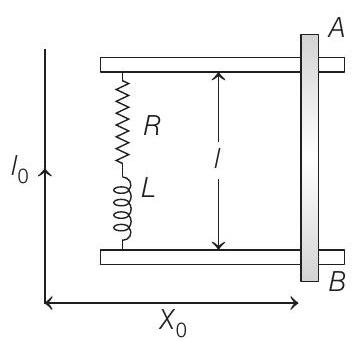Electromagnetic Induction and Alternating Current 1 Question 14
14. A metal bar
wire, carrying a constant current

(a) Find a relation among
(b) It is observed that at time
(c) The bar is suddenly stopped at time
Show Answer
Answer:
Correct Answer: 14. (a)
Solution:
- (a) Applying Kirchhoff’s second law, we get
or
This is the desired relation between
(b) Eq. (i) can be written as
Integrating, we get
So, from Eq. (ii) charge flown through the resistance upto time
(c) This is the case of current decay in an
Here,
Substituting these values in Eq. (iii), we get






